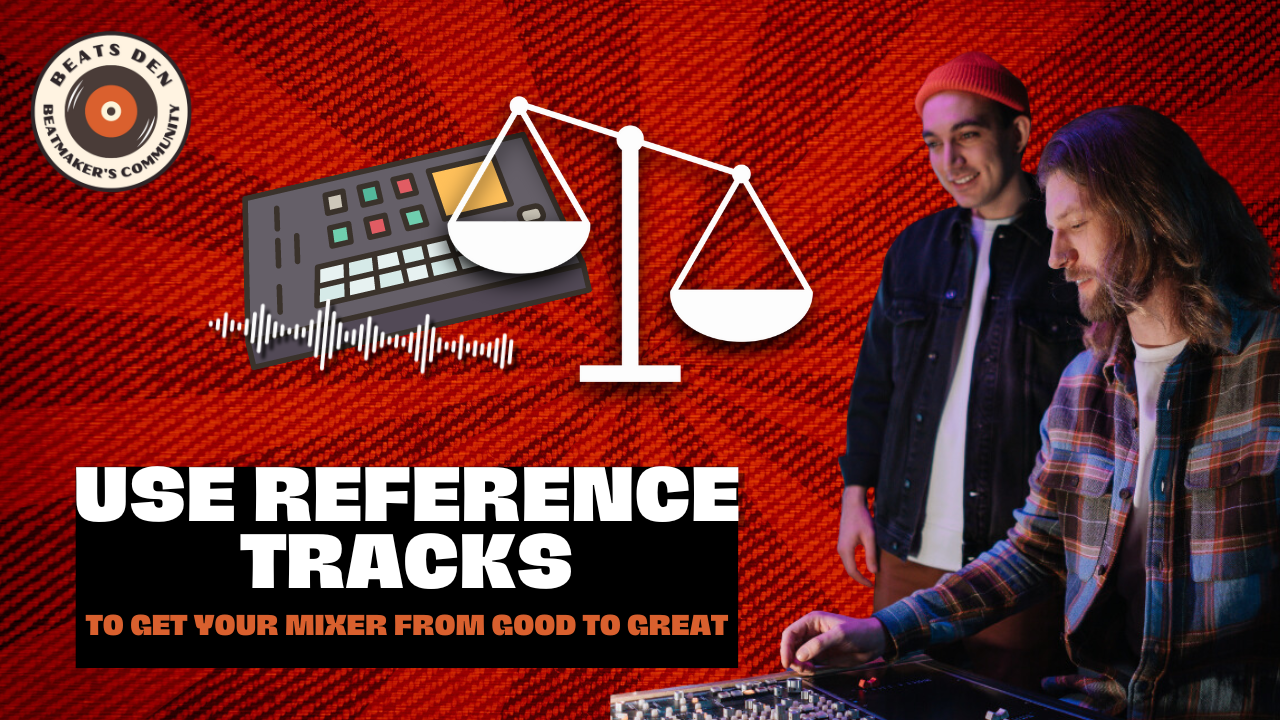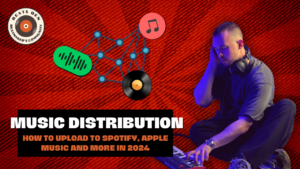Reference tracks are professionally mixed and mastered songs used as a benchmark for your own mixes. They can help you achieve a polished, professional sound by providing a clear target to aim for. Here’s how to effectively use reference tracks in your mixing process:
Select the Right Reference Tracks

Choose reference tracks that are:
- Genre-Specific: Pick tracks that match the genre of your music. For instance, if you’re producing a pop song, choose well-mixed pop songs as your reference.
- High Quality: Ensure the tracks are well-mixed and mastered professionally. Look for songs from artists or producers known for their high production standards.
- Similar Style: Look for songs with a similar arrangement, instrumentation, and vibe. This makes it easier to match the sonic qualities of your mix to the reference track.
Analyze the Reference Tracks

Before diving into your mix, take time to study the reference tracks:
- Frequency Balance: Note the balance of low, mid, and high frequencies. Identify which elements occupy the bass, midrange, and treble.
- Stereo Imaging: Pay attention to how elements are panned across the stereo field. Notice if certain instruments are placed more to the left, right, or center.
- Dynamics: Observe the loudness and the dynamic range. Notice how the track builds and releases tension.
- Tonal Balance: Identify how different elements (vocals, drums, bass, etc.) sit in the mix. Notice the prominence of each element and how they interact with each other.
Match Levels

Ensure the volume levels of your mix and the reference tracks are similar. This avoids misleading comparisons due to volume differences
- Loudness Matching: Use a loudness meter to match the perceived loudness of both tracks. Plugins like Youlean Loudness Meter can help you accurately match levels.
Learn more about ‘Why is Gain Staging so important in Mixing?’
A/B Comparison
Switch back and forth between your mix and the reference track:
- Software Tools: Use plugins designed for A/B comparison (e.g., ADPTR Audio MetricAB, iZotope Tonal Balance Control). These tools allow you to quickly toggle between your mix and the reference track.
- Critical Listening: Listen for differences in EQ, compression, reverb, and stereo imaging. Focus on specific elements and how they compare to the reference.
Identify Areas for Improvement

Focus on specific elements and how they compare to the reference track:
- Bass and Kick: Ensure the low-end elements are tight and controlled. Compare the punch and depth of your bass and kick with the reference.
- Vocals: Check if the vocals sit well in the mix and are clear. Compare the vocal presence, clarity, and effects used.
- High-End: Ensure the cymbals and hi-hats are crisp but not harsh. Notice the brightness and clarity of high-frequency elements.
Adjust Your Mix
Make adjustments based on your observations:
- EQ: Adjust frequencies to match the tonal balance of the reference track. Use a spectrum analyzer to help visualize the frequency content.
- Compression: Control dynamics to achieve a similar punch and presence. Compare the attack, release, and ratio settings used in the reference track.
- Reverb and Effects: Apply reverb, delay, and other effects to match the space and ambiance. Compare the amount and type of effects used.
Repeat the Process
Continue to refine your mix by periodically comparing it to the reference track:
- Iterative Adjustments: Make incremental changes and keep comparing until you are satisfied with the result. This process helps ensure your mix stays on track.
Use Multiple Reference Tracks

Using more than one reference track can provide a broader perspective and help you avoid over-relying on a single track:
- Diverse Insights: Different tracks can highlight various strengths and weaknesses in your mix. This approach gives you a well-rounded view of how your mix stands up.
Tools and Resources
- ADPTR Audio MetricAB: A plugin for A/B comparison and detailed analysis.
- iZotope Tonal Balance Control: Helps achieve a balanced mix by visualizing the frequency spectrum.
- Youlean Loudness Meter: For matching loudness levels accurately.
- Reference Tracks by Sample Magic: A collection of professionally mixed tracks designed for use as references.
Conclusion
Using reference tracks is a powerful method to improve your mixes. By selecting the right tracks, analyzing them carefully, and making informed adjustments, you can elevate the quality of your mixes to a professional level. Remember to keep the volume levels matched and use tools that facilitate A/B comparison to ensure an accurate assessment.
For more detailed guides and tutorials, check out resources like Sound on Sound and iZotope’s Learning Center. These platforms offer extensive articles and videos to help you master the art of mixing.












